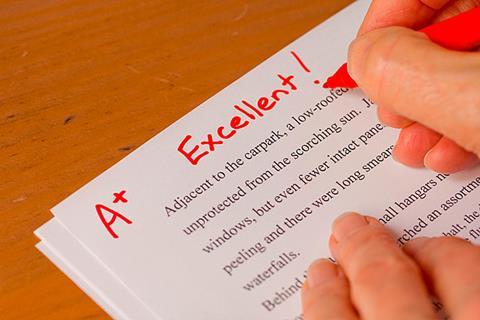An article by Tim Bowen on ways of exploiting authentic texts for grammar practice.

Introduction
It has long been the practice for graded texts in coursebooks to contain numerous examples of the same grammatical structure in order to highlight the use of that structure in context. For example, a graded text might contain several examples of the construction used to to illustrate a past habit. Unless the text is skilfully written, this will often have the effect of making the style of the text rather stilted and unrealistic, but the aim of highlighting the structure is nonetheless generally achieved with this type of presentation. Typically, the text is then followed by comprehension questions, which again highlight the structure, and finally by various grammar-based practice exercises to reinforce its use in some kind of context.
In the case of authentic reading texts, however, it is rarely the case that a particular text will have numerous examples of the same grammatical structure. It is far more likely to employ a wide range of structures of varying complexity, and may refer to past, present and future time and make use of both progressive and perfect aspects, as well as both active and passive voices.
Highlighting particular grammatical structures
If a teacher intends to make use of an authentic text to highlight a particular grammatical structure or structures, his or her task therefore becomes a little trickier. The teacher will have to identify a structure that is both useful and challenging for the class he or she is teaching and then decide how best to exploit that particular structure for further work. It is highly likely that he or she will have to go beyond the actual text and produce an exercise related to the example or examples in the text in order to give substantial practice of the chosen structure.
At the basic observational level, when using an authentic task to illustrate a grammar point, the teacher might ask the students to find (underline, highlight) an example or examples of a particular structure in the text, for example:
- In paragraph 1, find an example of a passive sentence.
- Underline all the passive sentences in the text.
- How many different tenses can you find expressed in the passive voice in the text?
- Find a passive sentence in the present continuous tense.
When looking at the meaning and use in more depth, the teacher might ask questions like these:
- Why does the author use the passive voice here?
- Could the author use the active voice? If so, what would the sentence be like?
Further practice
In order to give further practice of the particular structure the teacher has chosen to focus on, it will almost certainly be necessary to prepare some kind of exercise based on the structure (perhaps using the same context as the text). There are several choices for exercise type here but some of these can be used:
- Matching the beginnings and endings of sentences, e.g.
The trees were planted... ...by the community.
They fruit was given... ...by a group of residents.
They were cut down... ...to local shops.
The move was criticised... ...by the council.
- Choosing the best from a series of options, e.g.
The trees (have/were/are) planted by a group of residents.
-
Re-ordering jumbled words to make accurate sentences, e.g.
planted group the a residents trees by of were
-
Filling gaps using an appropriate form, e.g.
They _____ cut down by the council.The fruit ______ given to local shops.
or
The fruit was ___________ to local shops.The move was ____________ by the community.
-
Rewriting in a different tense or voice, e.g.
The trees were planted by a group of residents.A group of residents planted the trees.
-
Writing further sentences from prompts, e.g.
trees/plant/group/residentsThe trees were planted by a group of residents.
- Writing the endings of sentences, e.g.
The fruit was delivered ...The move was criticised ...
Advantages
The advantage of focusing on a structure or structures in an authentic text such as a newspaper article is that it enables the students to see these structures functioning in an authentic context. The disadvantage can be that it is rarely sufficient simply to observe or to notice and, in order to give further related practice, the teacher will almost certainly need to develop an exercise to ‘go beyond’ the text, as exemplified above.




No comments yet